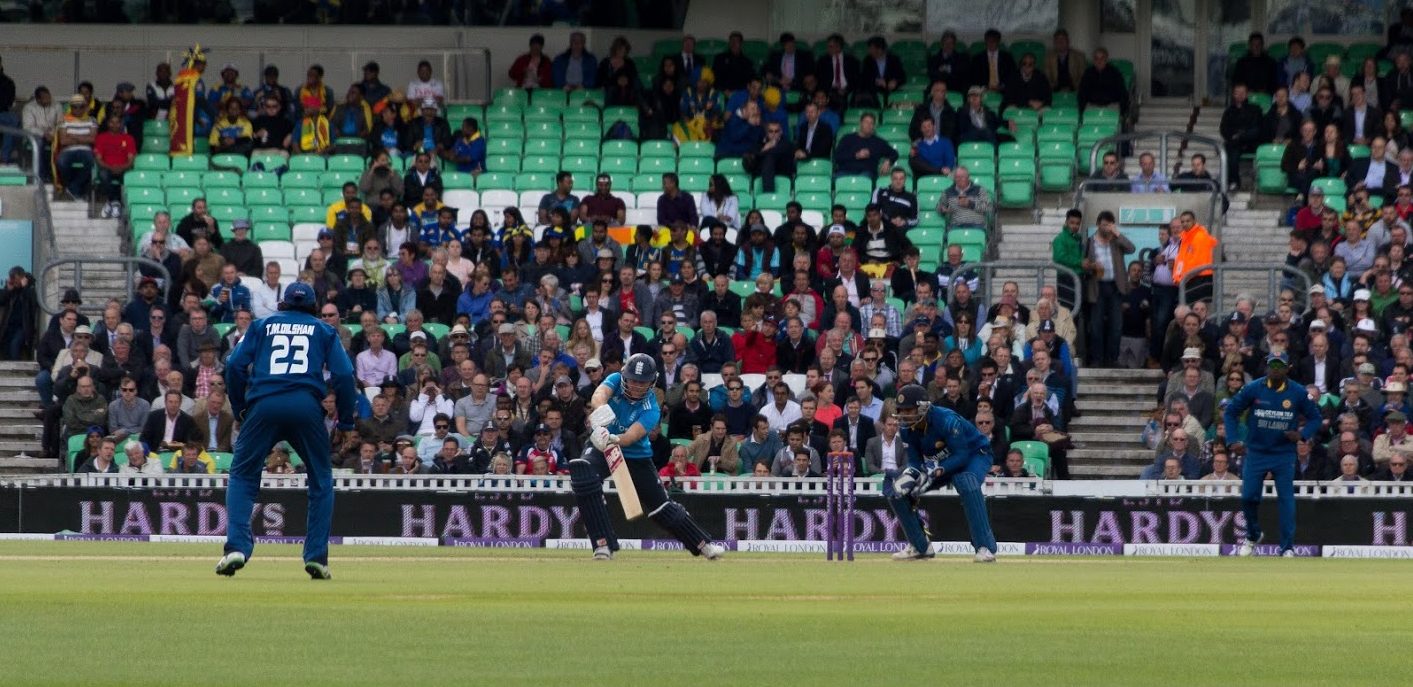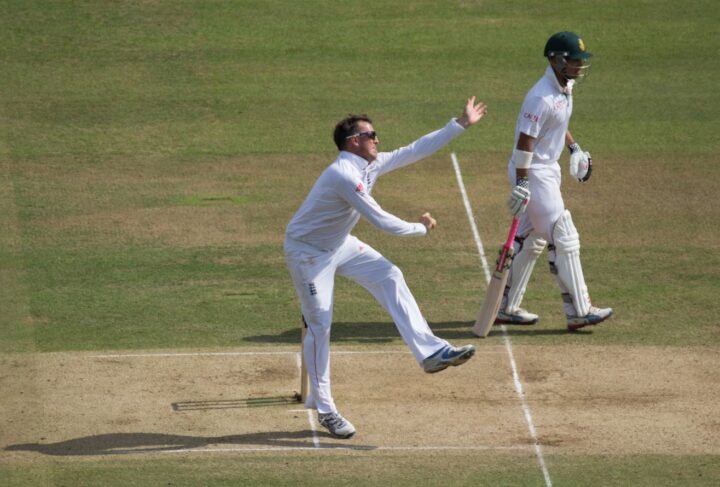The perfect yorker is maybe cricket’s coolest delivery. The batter is left helpless as either their toes are crunched, or their stumps are clattered. When done right, little can stand in its way. As such, it has become something of a death bowling staple in white ball cricket. When a chase gets tight, teams look to their bowler to nail some yorkers.
The problem is what comes when they go wrong. Indeed, the yorker quickly becomes the most expensive delivery in a bowler’s arsenal.
Yorkers On a Perfect Day
On a dream day, the yorker is the dream delivery. It comes out of the hand at a formidable pace, it dips late, the bails are sent into the sky. Picture Mitchell Starc’s dismissal of Ben Stokes in the Cricket World Cup 2019.
As well as being easy on the eyes, the numbers support the yorker’s status as the supreme economy delivery. When India toured New Zealand in early 2020, a statistic courtesy of CricViz was floated around: well-executed yorkers at Eden Park would see the runs go at 5.67 an over, in comparison a spell of full tosses saw the run rate skyrocket to 10.61.
If you nail it, it is unparalleled. Of course, it is never that easy.
Yorkers On Most Days
At this juncture, one may wonder why bowlers do not simply bowl perfect yorkers for twenty overs. The very simple answer is that they have the narrowest margin for error of any delivery. The perfect yorker is a very rare specimen. The rubbish yorker is a very common specimen.
If you bowl it a fraction too full, you give the batter a full toss which quickly gets sent over the boundary rope. Bowl a fraction too short, and the ball is put right into the slot to get slapped for six. Therefore, I controversially propose that most bowlers should put their yorker away.
If you try six wide yorkers, you are quite likely to have something of a torrid over. You will probably bowl wides; you will get your length wrong; you will get punished.
But despite this, many fans and commentators alike will sit there and commend you for bowling ‘the right ball’. Maybe it’s because the cricket community is enamoured with yorkers and gives them a special status? But they’re not particularly special when they’re clobbered to the fence.
The Mystique of Yorkers
Against Pakistan at Trent Bridge, Tom Curran tried a spell of yorkers at the death. By and large, he got battered. The couple of yorkers that he nailed of course got a terrific reception from the crowd. As to be expected, people love seeing a bowler hit their yorker. The question to ask is to what extent this rare victory is worth the pain?
Yes, perfect yorkers are effective deliveries, but Curran conceded so many runs in the pursuit of perfection that we must ask to what extent it was worth it.
Furthermore, this deification of yorker bowling has essentially guaranteed Chris Jordan a spot on in the T20 team. The ‘logic’ is easy to see: Jordan bowls yorkers so therefore is seen as a proper death bowler. Jordan however, is not statistically speaking a particularly good death bowler.
Of English bowlers, CricViz have Jordan as having the greatest negative bowling impact of any English death bowler to bowl at least 150 balls since 2018. This relates to the number of runs that his bowling will give away. In short, he is not actually very effective at the very thing that he is celebrated for.
This is where the methods of Tymal Mills become interesting.
A New Hope
Tymal Mills is a wonderful death bowler who does not rely on yorkers to constrain batters. Instead, Mills is a great proponent of bowling back of a length.
Hitting the back of a length is somewhat less tricky than hitting a yorker, and is also effective at cramping batters. It has the second best economy rate of any length, yet it not one that we see England bowlers using very much.
In the white ball tour of India, it saw a bit of use. England used Archer and Wood to bowl back of a length to cramp the middle order with high pace to great effect. Against Pakistan it was not an evident plan.
Fundamentally, cricket could do with assessing its infatuation with yorkers. A heavy reliance on them comes with a heavy cost.
Right now, England seem happy with Tom Curran and Chris Jordan despite the evidence available that they could do a lot better at the death. This in no small part comes down to the persuasive nature of being a yorker-heavy bowler.
So I end with a plea to the greater cricket world. Look inside yourself and find the strength to let the yorker and its reign of terror go. Let’s leave it as an occasional treat, rather than a tired and predictable dish that we come to resent.
Daniel Booth









I have sustained three broken toes in my life. All of them were from ducking yorkers. Enough said…
Peter Drake
Teacher playwright
Hexham Northumberland
Line, pace, swing, angle all matter with yorkers, it isn’t as if length is the be-all and end-all.
Take Stokes’ first delivery in the infamous Carlos Brathwaite over – he actually hit the yorker length pretty well but the ball swung down the legside and could be helped on its way for the first six. Jordan and Stokes had been tasked to repeat the role they’d performed in the previous match against NZ.
The batsman matters as well. Some batsmen play yorkers better than others. For example, ABDV likes getting low and helping the ball over fine leg so a yorker length plays into his strength.
Probably my favourite example of a yorker came in the First Test in 1974/75. Tony Greig made a century in the first innings by getting Lillee and Thomson mad and goading them into bowling short which Greig either evaded or carved away over the slips. Ian Chappell apparently gave them a rocket between innings and second dig Thommo yorked Greig for two with a perfect “sandshoe crusher”.
Joel Garner was the most consistent bowler of yorkers I’ve seen. He seldom swung it but his angle of delivery and remorseless accuracy were key (great bowler that he was, Curtly Ambrose couldn’t bowl a yorker on demand like Garner). Many people will think of Waqar when it comes to yorkers – his inswingers were great in red-ball cricket but he could be quite expensive in limited overs as batsmen could help them to leg. Pakistan won the WC when Waqar was missing injured and they could keep a lid on the scoring better (plus having Wasim and Mushtaq for wicket-taking).
The only consistently dangerous bowler I’ve ever seen who used the Yorker with any sort of regularity was Sri Lanka’s Malinga. There’s so little margin for error that few bowlers seem able to trust themselves with it.
As has been said Jordan and Curran try in the white ball game, but almost no bowler seems to have it in his armoury in the red ball game. I remember Holding and Ambrose being pretty adept at it, but their margin for error was reduced by sheer pace and the height they brought the ball down from, so even low full tosses were dangerous. I like to see bowlers trying it but unless the ball is swinging with a bowler like Stark or there is some pace to it like with Boult I don’t really see the point as a wicket taking delivery, as most batsmen are right handed so left armers always seem to have more success with their inswinging double whammy of bowled or LBW. Right armers inswingers often seem to disappear down the leg side. It seems to be used now merely to curtail scoring, but it becomes a potential free hit if misdirected.
That was a good read – many thanks. Regards, Peter Drake, Hexham, Northumberland.
My favorite yorker delivery is Russel’s dismissal by Mustafizur rehman in IPL, good information i loved it keep it up , stumpsandbails also providing latest cricket news you can checkout